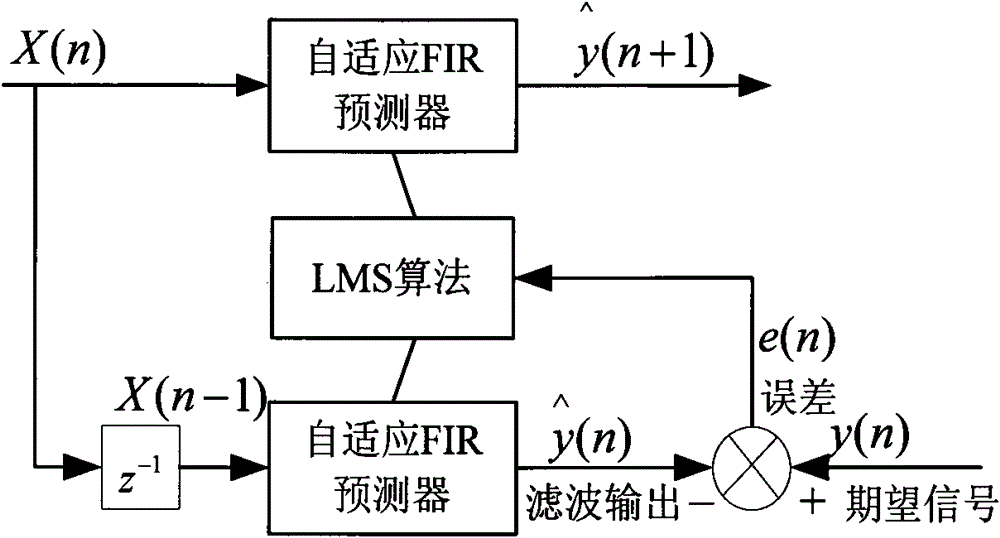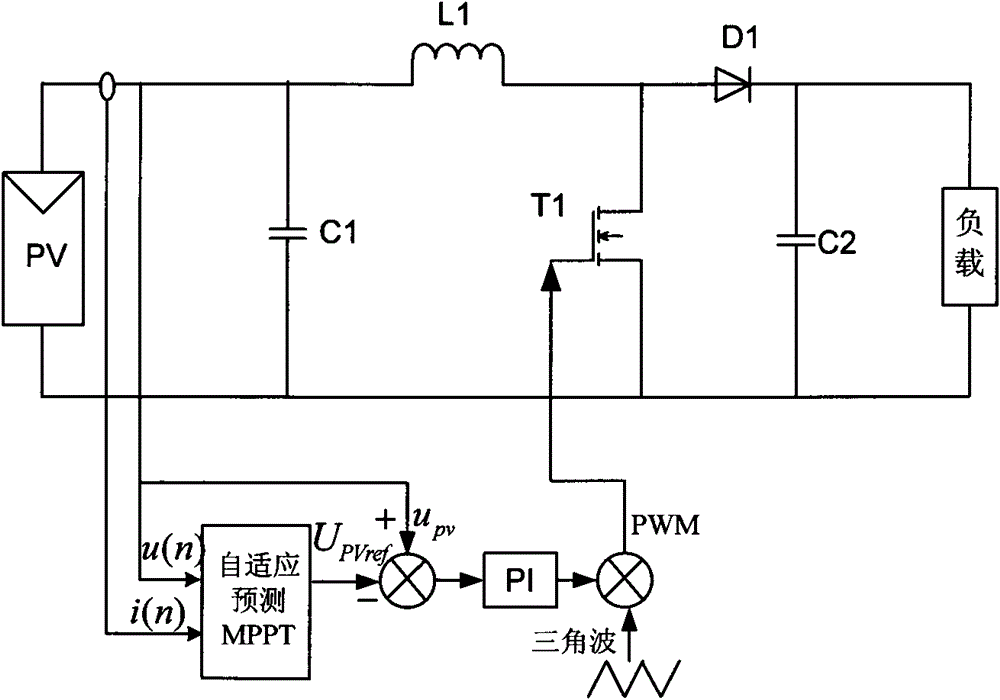Photovoltaic system MPPT (maximum power point tracking) control method based on adaptive prediction
An adaptive prediction, maximum power point technology, applied in photovoltaic modules, photovoltaic power generation, non-electric variable control and other directions, can solve the problems of control accuracy and tracking speed improvement, difficult to achieve, poor response ability, etc., to maintain control accuracy, The effect of reducing power loss and suppressing misjudgment
- Summary
- Abstract
- Description
- Claims
- Application Information
AI Technical Summary
Problems solved by technology
Method used
Image
Examples
Embodiment Construction
[0026] figure 1 is a schematic diagram of an adaptive prediction mechanism for photovoltaic array output power. The algorithm system adopts an adaptive prediction model based on finite impulse response (FIR), and the output y can be expressed as a linear combination of current and past input x.
[0027] y ^ ( n+1 ) = Σ K = 0 N - 1 h k x ( n - k ) = H N ′ X N ( n ) - - - ( 3 )
[0028] where X' N (n)=[x(n), x(n-1), ...
PUM
 Login to View More
Login to View More Abstract
Description
Claims
Application Information
 Login to View More
Login to View More - R&D
- Intellectual Property
- Life Sciences
- Materials
- Tech Scout
- Unparalleled Data Quality
- Higher Quality Content
- 60% Fewer Hallucinations
Browse by: Latest US Patents, China's latest patents, Technical Efficacy Thesaurus, Application Domain, Technology Topic, Popular Technical Reports.
© 2025 PatSnap. All rights reserved.Legal|Privacy policy|Modern Slavery Act Transparency Statement|Sitemap|About US| Contact US: help@patsnap.com



